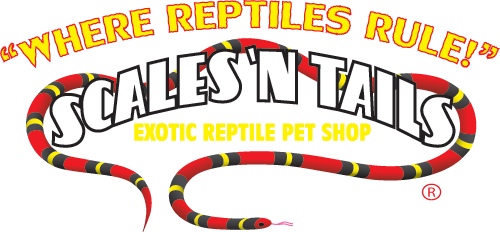Leopard Geckos

Leopard Geckos are among the most popular pet reptiles and are an excellent choice for beginner hobbyists. Leopard Geckos stay small, are very docile, and are relatively easy to maintain in captivity. These geckos are beautifully marked and have fascinating personalities. Over the years breeders have developed many different color morphs that have become available to hobbyists at all levels.
- Common Name: Leopard Gecko
- Scientific Name: Eublepharis macularius
- Distribution: Pakistan, India and surrounding regions
- Size: 8-9″
- Life Span: 10-18 years
HABITAT
HEATING
LIGHTING
SUBSTRATES
NUTRITION
HABITAT
- Hatchling to juvenile Leopard Geckos can be housed in a 10 gallon terrarium. Young Leopard Geckos can be housed together.
- Adult Leopard Geckos will need at least a 20 gallon terrarium. Do not keep males together because they are territorial.
- Zoo Med’s ReptiHabitat 10 and 20 gallon terrariums are an excellent choice for Leopard Geckos.
- A Repti Shelter, Habba Hut, or Cork Bark will provide a secure hiding place to help reduce stress.
- Make sure that each gecko has a place to hide.

HEATING
- Daytime Terrarium Temperature: 78-85° F
- Basking Spot: 90° F
- Nighttime Temperature: 70-72°F
- It is important to create a thermal gradient in your terrarium. This can be accomplished by providing a Basking Spot Lamp and an Under Tank Heater on one side of the terrarium. By focusing the heating elements on one side of the cage, you will naturally provide the proper thermal gradient.
- Although these nocturnal animals will not generally bask, providing a basking spot will maintain proper temperatures in your terrarium.
- Any of Zoo Med’s thermometers will help you keep a close eye on terrarium temperatures.

LIGHTING
- New studies have shown that Leopard Geckos will greatly benefit from exposure to UVB lighting.
- Zoo Med’s NatureSun® or ReptiSun® 5.0 Fluorescent Lamps can be used to illuminate your terrarium and create a photoperiod (light cycle) that will keep your animal on natural day/night cycles.

SUBSTRATES
- Leopard Geckos live in arid, sandy places in the wild and will do well on a variety of sand-type substrates in captivity.
- Hatchling Leopard Geckos will do best on Cage Carpet such as Zoo Med’s Eco Carpet or Vita-Sand®.
- Excavator® Burrowing Clay Substrate will allow you to create a naturalistic terrarium complete with burrows and tunnels for your animals.
- ReptiSand® and ReptiFresh® are excellent choices for housing Leopard Geckos.

NUTRITION
- Bearded Dragons are omnivorous reptiles that change their diet throughout their lives.
- Juveniles will need to be fed pinhead to small size crickets daily along with other small insects such as mealworms. Zoo Med offers a variety of Can O’ insects and canned diets that will make offering a varied diet convenient.
- Collard or Dandelion Greens, Romaine lettuce, and other veggies can be offered 1 -2 times per week.
- Always remove uneaten food after each feeding.

